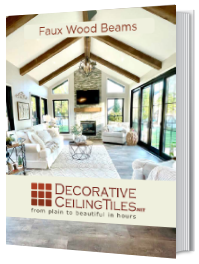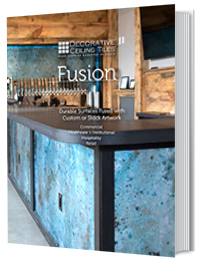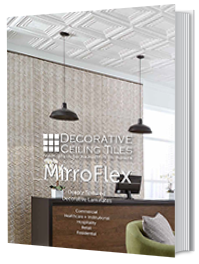What Is a Dome Ceiling?
Written by Milan Jara on 11th Oct 2022

Dome ceilings add richness and flair. Read on to learn more about a dome ceiling and how to incorporate one into your home.
When a ceiling extends upward like a sphere without any columns, it is called a domed ceiling. From early Italian Renaissance cathedrals to contemporary dwellings, this ceiling design is used in many forms of construction. The main benefit of a ceiling dome is that it gives the house's central room a remarkably distinctive appearance.
Types of Domes
Dome ceilings appear in homes, churches, and grand buildings around the world. There are sail domes, umbrella domes, oval and saucer domes, onion domes, and geodesic domes, one of the strongest.
There are both modern and antiquated domes. The same natural forces hold all domes in place, regardless of their style or age, and they all offer generous and unrestricted space.
You may not be able to integrate something as grand as these historical examples into your living room, but with modern lightweight materials, you can create a dome ceiling of your own. When installing a dome ceiling,you should consider factors such as lighting, construction, drywalling, finishing, painting, and trim to figure out the best place for it (more on this later).

Advantages of Dome Ceilings
Ceiling domes, especially faux domes made of durable polyurethane, are significantly simpler to install than plaster and less likely to sustain damage during installation. Numerous upscale complexes across the world have dome-shaped urethane ceilings because of their many benefits, which include:
Simple Installation
Because they are lightweight, these domes are simple to install and only require adhesives and a few mechanical fasteners. You don’t need to worry about pinning, unlike with plaster ceiling domes. One person can often install them without help. You can fit faux domes to nearly any type of ceiling or wall, including plasterboard walls and dropped ceilings, because they are composed of durable polyurethane.
Quick Finishing
Pre-primed urethane faux ceiling domes are ready for the final paint color of your choice. Because the polyurethane has a smooth surface and does not absorb it, less paint is needed. Some plaster ceiling domes need primer because they are not shipped ready to paint. Plaster ceiling domes require numerous coats of paint since the surface is not smooth and absorbent.
Strong and Shock-resistant
Faux ceiling domes are strong, resilient to shock, and challenging to break. Ceiling domes made of plaster easily crack and can be destroyed, which is a significant concern if the item breaks after delivery.
Not Prone to Cracking
Plaster expands and compresses as it ages and dries out due to humidity, which causes cracking. With faux polyurethane domes, you don’t have to worry about cracks.
Suitable in Humid Environments
Faux ceiling domes are impervious to moisture and therefore appropriate for use in humid conditions and exterior projects like swimming pool areas.
We have both elegant and subdued urethane ceiling domes to suit your preferences. Each dome has been factory primed and prepared for the paint or faux finish of your choice.
Disadvantages of Dome Ceilings
When installed as part of a remodeling project rather than a custom home construction project, faux dome ceilings can be pricey because the labor-intensive work required for such a project can significantly increase the price.
Heating and cooling a home with exceptionally high ceilings can be much more expensive since dome ceilings add volume to a room. Additionally, vaulted ceilings will draw in warm air that often rests closer to the ground since warm air rises, making a space feel chilly or drafty even when the heat is on.

Factors to Consider When Building A Dome Ceiling
Here’s what you should consider before dome ceiling installation:

Location
When making plans for a dome ceiling, location should be looked at first. Depending on the design, when deciding on the best place for your dome, remember you must have enough space above your ceiling to install it.
Lighting
Consider lighting before you start constructing your dome ceiling. There are two ways to light a dome ceiling. The conventional approach is hanging a chandelier or light fixture from the dome's center. But by taking an extra step and adding a light ring, you may give your dome ceiling an architectural aspect. What is a light ring? Light rings provide indirect lighting. Rope lighting is less expensive than LED lights, which are more costly but much brighter.
Building
Now that you have determined the position and lighting, it’s time to install your dome. Consider how you will complete your dome now that the dome ceiling frame is in place. Choosing the best approach depends on the terrain and budgetary considerations.
Trim
Deciding whether or not to add a custom element, such as urethane panel molding, to your dome ceiling is the final step in finishing it. The dome ceiling looks better when you use a complementary color scheme, such as a South Beach wall paneling. The optimum solution will depend on your budget and the value of your home. There are multiple ways to add trim at various pricing points, but adding custom accessory features like trim can get expensive. The quickest and least costly approach is to add crown molding to the inside radius of the dome ceiling.
Work with the Best!
Contact Decorative Ceiling Tiles to explore the different aesthetic options for your dome design. Remember to add flair to every dome to bring more interest to the vertical space of your home or business.




